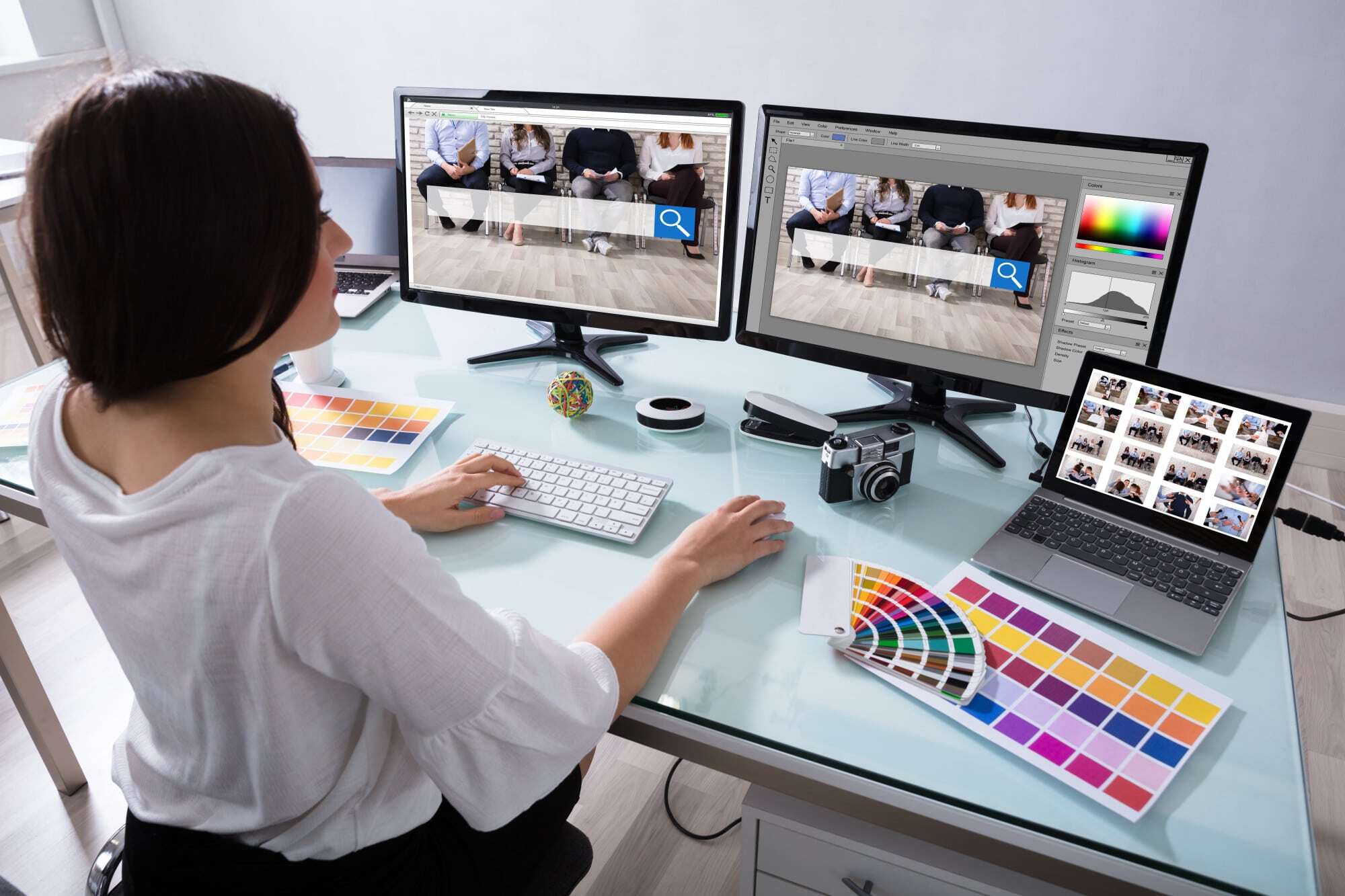Want a website that gets noticed and sets you apart from your competition? Here are some excellent web design and development tips that will put your website on the fast track to success!
Attracting clients to your website is the first step, but once there, your web design’s quality and simplicity are what keep them there. Your website is the gateway to your business. It is the first thing potential customers see when considering your product or service, so learn how to make a stellar first impression.
1. The Above-the-Fold is essential to Web Design and Development
The most important information should be above the fold. This area is the portion of the webpage that shows first when you open a webpage. Below the fold is the information accessed by scrolling down the page.
Consider Above-the-Fold as the store-front window into your site. Just as the store-front display is appealing, a shopper is more likely to enter if your above-the-fold information is pertinent. Therefore, you should place essential attention-grabbing details above the fold.
2. Organization and Layout
Many web designers will approach web design by sketching the layout on paper before building a website. It is important not to clutter your web page or overwhelm your reader, and they will leave. Don’t underestimate the importance of white space.
Beginners tend to want to pack in as much information as possible, but this can create a cluttered appearance, which is unappealing. Instead, think about chunking information into smaller bites for easier digestion.
Leave side margins that frame the content. Instead, use horizontal or vertical columns and white space in between so readers can choose which to focus on at once. By doing this, the clarity of informational pieces will pull the reader’s eye from one distinct piece of information to the next, giving time to soak it in before moving on.
3. Font and Text
Keep font styles clear to read, no flowery fonts. Use 16-point font size to make it legible. If the reader struggles to read the font, they will move to another website rather than adjust their screen size to read what you’ve written.
Avoid lengthy sentences or paragraphs. Keeping paragraphs at about three sentences each eliminates walls of text. If readers see a wall of text, they will skip it together.
Breaking paragraphs down into smaller chunks draws the reader’s eyes downward and allows them to skim for their desired information. It is also a good idea to use headers to organize the text and keep your readers tuned rather than sifting through the proverbial haystack.
4. Images are essential to Web Design and Development
Embedding images or custom logos are a great way to keep readers engaged while providing concise information with a memorable impact. However, it is essential to save the file size of your image between 100-500 kilobytes. The larger file sizes take too long to download, and not everyone has high-speed internet.
If people wait longer than 3-5 seconds for an image to load, they might become impatient and move to a different site. On the other hand, intelligent web design makes it easy to access and download, which appeals to readers’ more comprehensive audience.
5. Color Psychology
Color psychology is a vital component of successful web design and development. Research shows between 62% to 90% of readers will decide whether to continue with a service or product within the first 90 seconds on your site based on the color alone.
Every color evokes a different emotion or feeling, so do your research to ensure you produce the right feel for your purpose. A good rule of thumb is to keep your color variation in three colors. Whatever emotions your web creation evokes will become associated with your product or service, so choose wisely.
Also, choose a color that contrasts your font, so the text pops and is easy to read. Another consideration is creating interactive buttons with a flash of color to grab your reader’s attention. For instance, if you sell a product with a “Buy Now” button, you want it to stand out from the surrounding color.
6. Mobile Design
Ensure your web design is mobile-friendly. For example, if buttons are too small, they are difficult for readers to access on their mobile devices. If you aren’t sure how your web design appears on a mobile device, check it from your phone to see if the layout is what you expect.
Keep file sizes small and font sizes large for mobile devices. More time is spent surfing the web on mobile devices than on computers, so this is necessary to keep your readers tuned in.
7. Clear Navigation
Simplicity and usability determine how long a reader will stay on your webpage. Divide information into logical categories and use text headings rather than image headings. Text headings are easier to interpret but add to your Search Engine Optimization (SEO).
SEOs are how search engines find your site when people type keywords they are searching for in a browser search bar. For example, if you are a plumber and have only an image of a clogged sink on your website without the text “clogged sink,” search engines will not recognize it. Keywords must be spelled out for search engines to notice you.
Need Help With Web Design and Development?
Following these tips will significantly improve your website’s experience and search results, even as a beginner. However, if web design and development are out of your comfort zone, seeking professional web designers is a smart business option.
You will experience increased traffic to your website and more returning clients when utilizing a company specializing in marketing. We are here for you if you are ready to build a website that puts your business on the map. We are web design and marketing near me. Contact us to take your web design to the next level!







